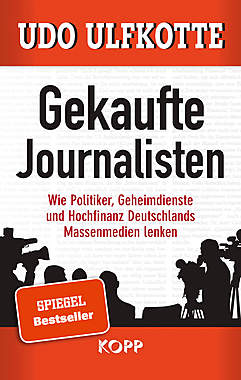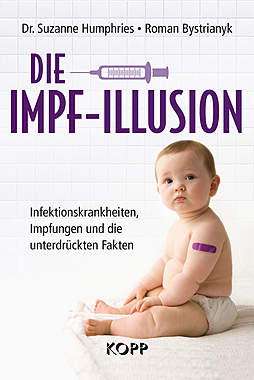- Und nach Infineon schnell wieder zur├╝ck zu meinem"Kugelgeld" (8000 v.Chr.) - dottore, 20.06.2001, 18:00
- Re: Test - dottore, 20.06.2001, 18:04
- Re: Noch'n Test - dottore, 20.06.2001, 18:10
- Re: Thx Uwe, es war die Mail! Geschna-a-a-a-llt! (owT) - dottore, 20.06.2001, 18:11
- Und gleich so ein interessantes Dankesch├Ân! - Uwe, 20.06.2001, 20:57
- Re: Thx Uwe, es war die Mail! Geschna-a-a-a-llt! (owT) - dottore, 20.06.2001, 18:11
- Re: Noch'n Test - dottore, 20.06.2001, 18:10
- Re:"Kugelgeld" (8000 v.Chr.)? - Kinderrasseln 3500 v. Chr.! ;-) - Dottore - Dimi, 20.06.2001, 20:23
- Re:"future promised transactions" - Zessionen - Geld (vor Silber!) - dottore, 21.06.2001, 12:48
- Re: Zessionen - Geld (vor Silber!) - Nie und Nimmer - Dottore - Dimi, 21.06.2001, 22:05
- Re:"future promised transactions" - Zessionen - Geld (vor Silber!) - dottore, 21.06.2001, 12:48
- Re: Test - dottore, 20.06.2001, 18:04
Und nach Infineon schnell wieder zur├╝ck zu meinem"Kugelgeld" (8000 v.Chr.)
Hi,
schnell aus den Schr├Âcknissen der Gegenwart wieder ins ganz Archaische.
Da f├╝hlt man sich ganz einfach wohler, besser.
Es geht noch mal um die Geldentstehung, wobei (f├╝r mich) Geld immer ein Zeit- bzw. Zeit├╝berbr├╝ckungsph├Ąnomen ist, aber das ist letztlich wurscht.
Interessant dieser Text, vor allem, weil er auf die sehr hilfreichen Forschungen von Frau Schmandt-Besserat abhebt.
Ich habe gek├╝rzt und Wichtiges hervor gehoben.
"Tokens: the origin of mathematics"
Tokens are small geometric clay objects (cylinders, cones, spheres, etc.) found all over the Near East from about 8000 B.C. until the development of writing. Their significance as the precursors of both mathematics and writing was first recognized by Denise Schmandt-Besserat of the University of Texas at Austin in the early 1970's. Her theories as to their development, usage and significance have been elaborated and refined in a series of publications over the past 20 years. This brief summary is largely based on her writings."
Jessas, etwa sogar die Schuld vor der Schrift?
"Tokens are first identified at around the same time as the local peoples changed from a life based on hunting and gathering to one based on agriculture. The tokens, as Schmandt-Besserat says,"were part and parcel of the Neolithic phenomenon; that is, the so-called agricultural revolution." (Before Writing 41).
The earliest tokens were simple shapes and were comparatively unadorned; they stood for basic agricultural commodities such as grain and sheep. A specific shape of token always represented a specific quantity of a particular item. For example,"the cone... stood for a small measure of grain, the sphere represented a large measure of grain, the ovoid stood for a jar of oil." (Before Writing 161).
(...)
With the development of cities came a more complex economy and more complex social structures. This cultural evolution is reflected in the tokens, which begin to appear in a much greater diversity of shapes and are given more complicated designs of incisions and holes.
<font color="FF0000">The standardization of the tokens meant that they had great power for record-keeping and contracts in a way that counting using pebbles or twigs would not do. A collection of tokens could represent a future promised transaction, or be kept in an archive (in a temple or palace) as a record of a past transaction. Both contracts and archives require secure methods of keeping groups of tokens. The Mesopotamians devised two main systems of storage. The first involved piercing the tokens with small holes, stringing them on a piece of cord and attaching the ends of the string to a solid lump of clay, called a bulla."</font>
GOTT SEI DANK! DA SIND SIE WIEDER... (bulla = Bulle = Kugel)
(Wenigstens schon Mal als Rechengeld?)
"Bullae typically are of a size to fit in the palm of a hand and are marked with impressions of a cylinder seal to identify the parties to the transaction and prevent later tampering. Any attempt to alter the number or type of tokens would involve breaking the seals."
YES, DIMI, YES - jetzt fehlt nur noch die Gleichung token = Geld.
"The second major method was storing the tokens inside a hollow clay envelope, which was then marked by a seal. These two methods were contemporaneous, though, curiously, the two systems were used differentially for plain and complex tokens."For reason we do not know, plain tokens were most often secured by envelopes and complex tokens by bullae." (Before Writing 110).
Of the two systems, the practice of storing tokens in clay envelopes was the more significant for the development of mathematics. Envelopes provided a solution to the problem of secure storage of tokens, but like many technological solutions, raised problems of their own."A clay envelope has one obvious drawback as a means of storing information: it is not transparent; if you forget what is inside, the only way to find out is to break open the seal." (Oneness 48). The resolution of this problem was to impress the tokens on the outside of the envelope before sealing them inside. The outside marks could then serve as a reference and the envelope could be broken open to check the actual contents if there was any dispute about the marks.
The last step in the evolution of tokens was a merging of the two systems of bullae and envelopes. Simple tokens were impressed to make marks on a solid lump, or tablet, of clay. Only the tablet was then kept. Within a couple of hundred years, this new system was also being used for the complex tokens, but here, because their complicated shapes and designs did not transfer well to the tablet, an image of the token was drawn on the clay. This new system, in place by about 3000 B.C., afforded greater ease of use and storage, at a price of a certain loss of security. These impressed or drawn marks on the clay tablets were the beginnings of a numeration system."
<font color="FF0000">Jetzt geht's also nur noch um die Frage, warum diese Tontafeln nicht als Geld h├Ątten fungieren k├Ânnen. Denn sie waren f├╝r beides geeignet ("use and storage") wie Geld heute auch. Sie hatten (wenn auch nicht alle) ├╝berdies alles, was eine Banknote auch heute hat:"future promise transaction", also Umlauf- bzw. Zessionsf├Ąhigkeit, Zahl, Sicherheitsmerkmale, Siegel (heute hat jede Buba-Note Siegel plus Unterschriften, damals gings einfacher) - also?
Also: Wer will, der kann das schon Mal als fr├╝he Banknote ansehen. Aber niemand muss!</font>
Die Schmandt-Besserat habe ich seit Jahren und auch schon mit gr├Â├čtem Vergn├╝gen gelesen, nur hatte ich das"Before Writing" irgendwie vergessen und bin ich jetzt erst wieder im Web drauf gesto├čen. Bl├Âdmann! Setzen!
Sobald ich wieder in die Tiefen meiner Bibliothek..., grab' ich's gleich aus.
In diesem Link (hoffentlich kommt was, was meinst Du Uwe?)
also hier
ist vielleicht was zu kriegen, sonst unterm Antwortfenster der ganze Link (dort unten dann bei TOKEN).
Mir tun die armen Infineon-Erstaktion├Ąre, die so tapfer durchgehalten haben, ├╝brigens wirklich leid.
Gru├č
d.
<center>
<HR>
</center>
gesamter Thread:
 Mix-Ansicht
Mix-Ansicht

